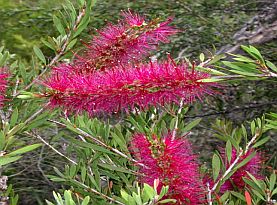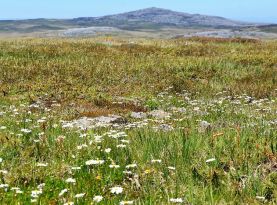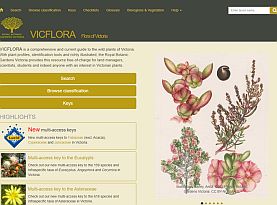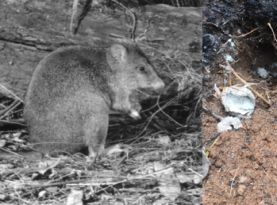SWIFFT Seminar notes 29 July 2021
Royal Botanic Gardens
SWIFFT seminar notes are a summary of the seminar and not intended to be a definitive record of presentations made and issues discussed.
This SWIFFT seminar was conducted online with 146 participants via Microsoft Teams and streamed live via YouTube. SWIFFT wishes to acknowledge support from the Department of Environment, Land, Water and Planning, Victoria in organising the seminar and thank speakers from the Royal Botanic Gardens Victoria for their time and delivery of presentations. Also, thanks to Michelle Butler who chaired the session from Ballarat and acknowledged Traditional owners, Elder’s past and present on the lands covered by the meeting.
Key points summary
Victorian Conservation Seedbank: supporting salvage and recovery
- The Victorian Conservation Seedbank has played a significant role in conserving high priority threatened flora of Victoria impacted by the 2019/20 bushfires.
- The seed bank currently contains about 50% of Victoria’s rare and threatened flora.
- Material in the Seedbank is used to generate knowledge about plant requirements and as a source material for reintroduction programs for threatened plant species, and a safeguard for species at risk.
Bushfire Conservation Genetics: assisting recovery planning
- Conservation genetics encompasses the use of genetic theory and techniques to reduce the risk of extinction in threatened species.
- A loss of genetic diversity may reduce the evolutionary potential for species to adapt to changing environments, causing a loss of fitness and increase the probability of population extinction.
- After the 2019/20 bushfires in eastern Victoria there has been a particular emphasis on understanding the genetic risk to species through the Bushfire Conservation Genomics Project.
VicFlora: gateway to the State’s flora
- VicFlora is a free online Flora resource containing over 4,400 species covering all native and naturalised vascular plants in Victoria.
- Species pages contain description, distribution, threats, native status and images.
- VicFlora contains around 22,000 images, with a coverage of greater than 80% of Victorian plant species.
-
Vicflora is interactive; users can conduct searches, identify flora, explore plant classifications, create maps and flora check lists.
Fire, Fungi and Long-Footed Potoroos
- Underground fungi have an important mycorrhizal symbiont with eucalypt forests by maintaining the integrity and health of forests through the uptake of moisture and nutrients.
- Studies are underway to determine the ecological consequences of the fires on fungal communities in East Gippsland.
- The Long-footed Potoroo is a Mycophagous mammal, its diet being over 90% fungi.
-
It is thought there is a co-evolutionary relationship between underground fungi and some marsupials (fungi provide a food source whilst marsupials disperse the fungal spores into the environment).
List of speakers and topics
Speaker summaries are adapted from presentations and are not intended to be a definitive record of presentations made and issues discussed.
- Victorian Conservation Seedbank: supporting salvage and recovery - Meg Hirst - Royal Botanic Gardens Victoria
- Bushfire Conservation Genetics: assisting recovery planning - Tara Hopley and Laura Simmons - Royal Botanic Gardens Victoria
- VicFlora: gateway to the State’s flora - Andre Messina - Royal Botanic Gardens Victoria
- Fire, Fungi and Long-Footed Potoroos - Naveed Davoodian - Royal Botanic Gardens Victoria
SPEAKER SUMMARIES
Victorian Conservation Seedbank: supporting salvage and recovery
Meg Hirst - Royal Botanic Gardens Victoria
The Victorian Conservation Seedbank has played a significant role in conserving high priority threatened flora of Victoria impacted by the 2019/20 bushfires.
The Victorian Conservation Seedbank was established in 2005 and is managed through the Royal Botanic Gardens (RBG). The main activities involve assessing, collecting and banking seed from Victorian flora for long term storage.
The seed bank currently contains about 50% of Victoria’s rare and threatened flora. Material in the Seedbank is used to generate knowledge about plant requirements and as a source material for reintroduction programs for threatened plant species, and a safeguard for species at risk. The target species are rare, threatened or vulnerable species endemic to Victoria.
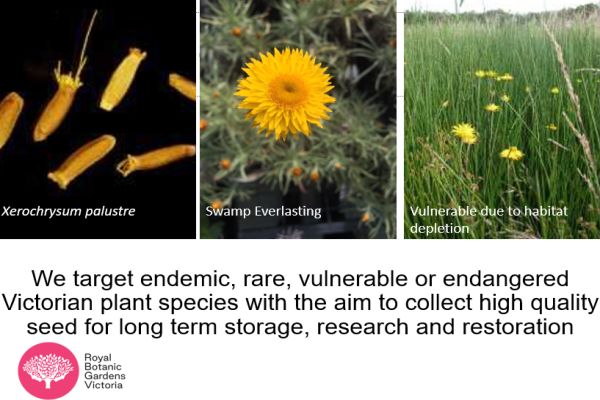
Seed collection process
Meg spoke about the seed collection process which is carried out under established guidelines, including permits to ensure the highest standards of seeds are collected. Meg pointed out that field collections of seeds aim to maximise the genetic sampling of target populations to capture the genetic diversity.
Site selection
On-site inspections are carried out to define the target location (including GPS), habitat, associated species, abundance and ecology. For bushfire affected areas, species threatened status and the percentage of habitat burned is assessed and mapped to determine if a species occurs outside of the fire scar, or if their only known locality has been burnt.

Timing
Meg emphasised that timing is critical to successful seed collection, particularly as there can be significant variations in the availability of high-quality seed. Where possible, vegetative material like cuttings are collected, either instead of or along with seed to allow for onward propagation.
As an example of the difficulties which can be encountered Meg spoke about the Snowy River Westringia Westringia cremnophila, an endangered species which had only about 60 individuals (or 12%) of the population of 500 plants remaining after the 2019/20 bushfires. This species is not adapted to fire and could easily face total extinction from bushfire. The collection was undertaken in incredibly steep gorge country and material from only 5 plants could be reached. The RBG Cranbourne nursery have since been able to successfully produced tube stock from the field collection.
Seed curation
Meg explained the process of assessing and preparing the collected seed for storage.
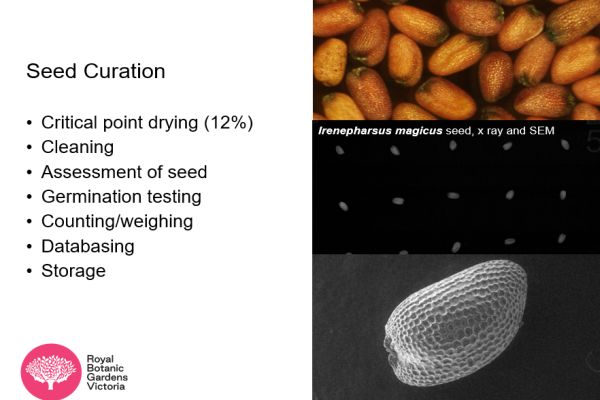
Lower image: Seed from Elusive Cress Irenepharsus magicus under Scanning Electron Microscope.
The aim is to prepare 4000 seeds per species, with 2000 retained at the seedbank, and 2000 sent to the Millennium Seedbank under the care of the Royal Botanic Gardens Kew, in the UK but this is not always possible due to some of the plant populations being very small.
A germination test of cleaned seed is conducted under controlled conditions using a standard protocol.
Seedlings for research and conservation
Meg spoke about additional work that flows on from the seed collections, this includes the germination of seeds for taking images and pressings which are used by Flora of Victoria online and in Herbarium collections to help with species identification.
Seedlings of rare species from germination tests are also grown on for inclusion in ex situ living collections at Melbourne or Cranbourne Gardens, for further future seed collection from cultivated plants, for research and for community engagement.
Use of new technologies in seed curation
X-ray
X-raying seed is now a standard part of seed curation. It is a non-destructive method of assessing seed quality and avoids wasting seed which previously had to be cut to determine seed viability.
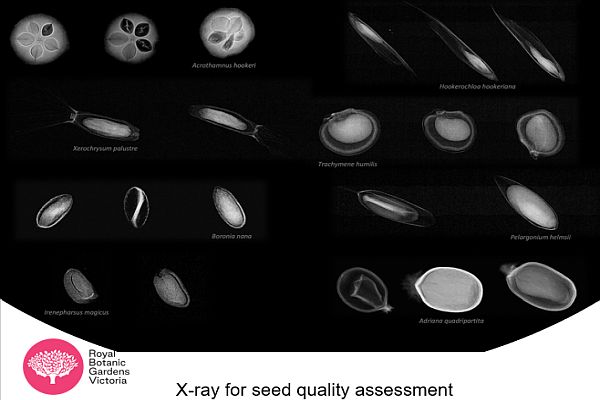
Scanning Electron Microscope
A Scanning Electron Microscope (SEM) is used as an analytical tool for taxonomic studies, and research. The high magnification SEM images of seeds are being uploaded and will be available as part of the Flora of Victoria online.
Thermogradient plate
A thermogradient plate is used to run temperature and photoperiod experiments to determine optimum requirements for germination. This work assists in being able to characterise thermal niches for germination and thermal limits for germination of different species and populations.

Research and collaboration
Meg spoke about a number of examples of how the seedbank has been used, to produce seedlings for on-ground conservation recovery projects and to return species back into the environment e.g.
- Callistemon kenmorrisonii and Callistemon forresterae are critically endangered species impacted by bushfires in Far East Gippsland
- Snow Pratia Lobelia gelida, endangered and restricted to only two locations at Mt Buffalo and Mt Reynard in Eastern Victoria.
- Button Wrinklewort Rutidosis leptorhynchoides, an endangered species which is confined to basaltic grasslands between Rokewood and Melbourne.
- Native grassland restoration at Royal Park, genera include Arthropodiums, Brachyscome, Chrysocephalum, Podolepis, Craspedia and Xerochrysum
Summary
The Victorian Conservation Seedbank supports salvage and recovery, with an emphasis on critical target species due to events such as the 2019 -20 south eastern bushfires. There are partnerships with practitioners on the ground to assess in situ populations, engage with community groups, work with RBGV colleagues on projects such as Raising Rarity and Care for the Rare, and continue to curate and bank threatened Victorian species as well as to better characterise the germination requirements of recalcitrant and difficult to germinate species, ultimately allowing for more effective germination and propagation of the banked taxa.
Meg thanked the team at the Victorian Conservation Seedbank and Community Groups and who have been involved in the conservation of threatened flora.
Key points from questions
- There have been no issues with X-rays of seed, particularly as it is only carried out as a snapshot of the quality of the seed being banked.
- There are a number of difficult to germinate genera which are being worked on.
- The Snowy River Westringia Westringia cremnophila (endangered) is only known from one population which occurs an extremely remote and difficult location on vertical rock cracks. The area had been impacted by the 2019/20 bushfires; the team has managed to successfully collect enough plant material to propagate new plants.
Bushfire Conservation Genetics: assisting recovery planning
Tara Hopley and Laura Simmons - Royal Botanic Gardens Victoria
Overview of Conservation Genetics
Tara provided an introduction to Conservation Genetics which has been recognised in many conservation Acts and Strategies, for example:
- Victoria’s Flora & Fauna Guarantee Act 1988, has one of its objectives to ‘protect, conserve, restore and enhance genetic diversity’.
- Protecting Victoria’s Environment - Biodiversity 2030 and Australia’s Biodiversity Conservation Strategy 2010-2030, also recognise genetic diversity as one of three levels of biodiversity along with species diversity and ecosystem diversity.
- In 2020, the IUCN approved a call for increased consideration of genetic diversity in planning and actions.
After the major 2019/20 bushfires in eastern Victoria there has been a particular emphasis on genetic risk to species.
Conservation genetics encompasses the use of genetic theory and techniques to reduce the risk of extinction in threatened species. Its longer-term goal is to preserve species as dynamic entities capable of coping with environmental change.

Conservation genetics assesses:
- loss of genetic diversity and consequent reduced ability to evolve in response to environmental change (loss of evolutionary potential)
- fragmentation of populations and reduction in gene flow
- the deleterious effects of inbreeding on reproduction and survival
Tara used a number of slides to demonstrate the theory of conservation genetics which assesses the genetic diversity of populations and the structure and spread of the diversity across the landscape. In fragmented landscapes populations tend to become smaller and more isolated from each other which makes them susceptible to loss of genetic diversity. A loss of genetic diversity may reduce the evolutionary potential for species to adapt to changing environments, causing a loss of fitness and increase the probability of population extinction.

View the animation from Tara’s presentation.
Environmental impacts from fire and insects kill of the more susceptible genotypes (blue) as they are not adapted to these threats. Previously collected seeds can be used to restore the genetic diversity back to the sites where they were lost, provided all the genotypes were collected.
For species which are rare, the genetic diversity may low and not evenly spread across the landscape. There may be a common genotype in populations which are well connected but isolated populations may have limited genotypes present. This means there is reduced capacity to restore the population to its former diversity, exposing the population to a high level of decline or loss.
The RBGV Bushfire Conservation Genomics project
Laura Simmons - Royal Botanic Gardens Victoria
Laura spoke about applying Conservation Genetics to flora impacted by the 2019/20 bushfires in eastern Victoria. The project commenced in 2021 and is being funded through the Bushfire Biodiversity Response and Recovery Program (BBRR).
Investigate population genetic diversity of rare or threatened species in Victoria affected by recent bushfires or are at risk by bushfire:
- Compare burnt and unburnt populations where possible across each species range
- Compare the genetic health of small populations compared with large population
- Investigate the difference in genetic diversity between congeneric species and if so, inform management strategies to retain genetic diversity
Genetic diversity can be considered as a measured of resilience and adaptive potential for a species, therefore a key outcome of the project is a measure of the resilience of a suite of Victorian flora species, based on the distribution of genetic diversity across the population.
The project commenced with a shortlist of 38 target species for conservation genetic studies based on their status under the FFG Act 1988, EPBC Act 1999 and whether the species is listed as a priority for action post fire and the percentage of habitat burnt. In real terms the project aims to deliver outputs for 20-25 of the target species with 2 species per genus.
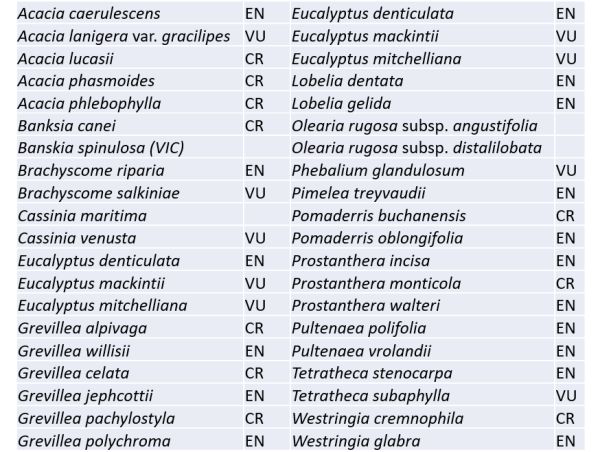
Laura spoke about some of the target species which includes 5 Acacia species.

Project activities
Laura explained the processes involved in the project which includes identifying sampling sites, field collections taking leaf samples and recording sampling data with the precise location for each sample taken.
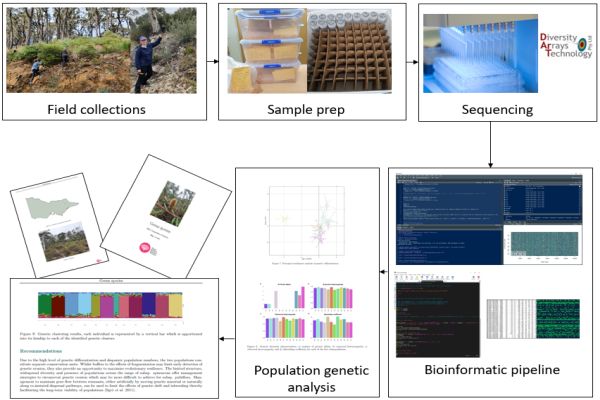
Progress & challenges
Laura pointed out that samples are collected across a large area, in often difficult terrain. Some of the collections must be made from seedlings which can be difficult to locate. For many herbaceous species the field work must be timed to coincide with the flowering season to help find and accurately identify the plants.

Laura spoke about one of the recent achievements being the collection of 50 samples of Eucalyptus mackintii, despite species identification challenges between different juvenile and adult leaf forms at different locations. Also, there were difficulties finding fruit and identifying bark in burnt locations.
Acknowledgments
Laura acknowledged the collaboration from internal and external partners which includes DELWP regional staff, Parks Victoria, RBGV Melbourne & Cranbourne staff and Landcare Networks.
Laura asked that anyone with local knowledge regarding species on the target list which are recovering from fire to contact her.
Key points from questions
- In the absence of a Conservation Genetics type project, collections of a species to attain high genetic diversity requires the collections to be made at multiple sites, multiple plants from each of the sites and multiple time points as different plants flower and seed at different times.
- Many of the target species have distributions which go into NSW but the funding focus is on Victoria at this time. Partnerships with NSW are being looked at to collect samples from the entire geographic range of a species.
- Research using the thermogradient plate is carried out to better understand the optimum conditions for germination and growth of priority species from known localities but there needs to be a much broader look at species across a wide geographic range as we face the challenges of climate change.
Contacts:
VicFlora: gateway to the State’s flora
Andre Messina - Royal Botanic Gardens Victoria
Vicflora is a free online Flora resource covering all native and naturalised vascular plants in Victoria. The site contains over 4,400 species. It supersedes the printed volumes of ‘A Census of the Vascular Plants of Victoria’ and ‘Flora of Victoria’.

Features of the Vicflora site
- Species pages - description, distribution, threats and native status plus around 22,000 images, with a coverage of greater than 80% of plant species
- Keys to families, genera, species, and subsp./varieties - these may be viewed in the interactive or more traditional bracketed keys as you would see in a book.
- Multi-access keys – an easy means of finding species in major families; Eucalyptus, Acacia, Cyperaceae, Juncaceae, Asteraceae and Fabaceae
- Search functions – search for what you are interested in by running a query through a range of filters
- Images – a significant number of images have been included which includes photographs and line drawings, other diagnostic material such as seed images from the Victorian Conservation Seedbank and herbarium specimens.
- Checklist – create your own checklist for any park or reserve in Victoria. In the near future, the checklist will incorporate any point location.
- Access - VicFlora can be accessed via computer or smartphone (no app required)



New look functionality
Andre spoke about a number of new features that will be included to upgrade species pages and the inclusion of more images. Maps will be upgraded to be fully interactive.
A major new addition will be Mosses of Victoria which will have similar features to the vascular plants in VicFlora.
Key points from questions
- At present there is no direct connection between INaturalist and VicFlora due to the fact that VicFlora only contains verified records. However, INaturalist records are fed into Atlas of Living Australia. Validated records are linked in with VicFlora.
- VicFlora is not viewed as an App. It is a web-based platform which has interoperability to be used on a computer or smartphone.
- Images of seedling pressings are usually taken when pants are at a fairly uniform age, generally when 5 leaves are present with the cotyledon still attached.
https://vicflora.rbg.vic.gov.au/
Fire, Fungi and Long-Footed Potoroos
Naveed Davoodian - Royal Botanic Gardens Victoria
Naveed introduced his presentation by talking about his previous research in Mycology in northern America, particularly his PhD on the ectomycorrhizal mushrooms Genus Gyroporus. In Australia, Naveed has undertaken post-doctoral work on truffle like fungi (not the true truffles, Ascomycetes which are eaten by humans) but Basidiomycetes (false truffles, which are underground spore sacks) many of them can be aromatic to attract mammals to disperse the spores. Basidiomycetes occur worldwide but are especially diverse and abundant in Australia.

Ecologically important truffles in Australia
Naveed focused on one Order of truffles, Hysterangiales, which are ecologically important in Australia, they are found throughout different times of the year and are eaten by wildlife.
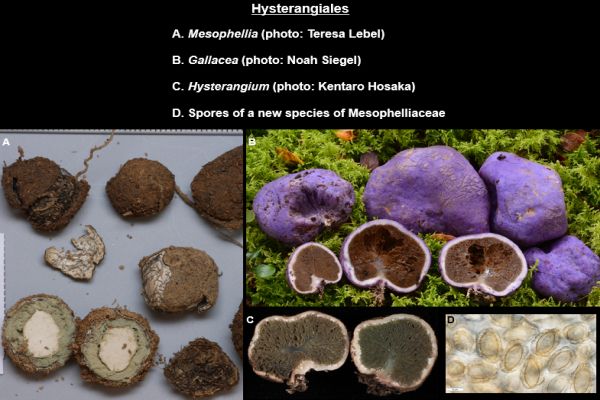
Ecologically, Hysterangiales is a very important Order in Australia. Many of the genera in this order are prolific post fire fruiters and support a number of native mammals as well as being mycorrhizal symbionts in eucalypt forests post fire.
Naveed spoke about the recent publishing of Phylogenetic analysis of Hysterangiales in the Journal of Fungal Systematics and Evolution
N. Davoodian, T. Lebel, M.A. Castellano, K. Hosaka (2021). Hysterangiales revisited: expanded phylogeny reveals new genera and two new suborders. FUSE 8: 65-80.
Determining the ecological consequences of the fires on fungal communities in East Gippsland
Naveed spent a considerable amount of time in selecting study sites in East Gippsland which focused on the Lowland Forest type vegetation.
Naveed referred to previous long-term monitoring of the Long-footed Potoroo in and around the study area. He also referred to major studies by Andrew Claridge in the 1990’s to early 2000’s which looked at truffle like fungi at a landscape scale. Some of the sites were included in the recent study. Naveed thanked Dr Claridge for his support.

Two categories of burn were used based on the DELWP bushfire severity classifications (High burn – more than 80% of canopy scorches and Low burn – less than 20% canopy scorch). Naveed noted that the combined impacts from prescribed burns, logging and bushfires have created an extensive, complicated patchwork of disturbance across East Gippsland. Study sites were focused on the least disturbed areas.

Field collections also include fruiting epigeous (above the soil surface) mushrooms and underground truffle like fungi. Naveed noted that to-date he has observed higher fungal species diversity at the low scorch sites compared with the high scorch sites one year after the fires.
Long-footed Potoroo - a Mycophagous mammal
The Long-footed Potoroo is a Mycophagous mammal, its diet being over 90% fungi, almost all of which are truffles and at certain times of the year up to 40% of its diet consist of Mesophellia.

Acknowledgments
Naveed acknowledged the DELWP staff who have helped out in the study, in particular Willow Bourke, Tony Mitchell and Mark Perry. Also, Dr Andrew Claridge, Royal Botanic Gardens Victoria, volunteers from the University of Melbourne and other organisations involved.
Key points from questions
- There are a number of other marsupials which dig around for truffles but not to the same specialised extent of the Long-footed Potoroo.
- The link between fungi and marsupials which dig and turn over the soil whilst feeding is important for the health of forests, particularly after fire.
- The Hysterangiales group of fungi date back 80 million years whilst the convergence of other mushroom linages started 30 million years ago.
- It is thought the relationships between underground fungi and marsupials is co-evolutionary feedback from when aridification drove the fungi underground. Dispersal by animals which eat underground fungi then drives the evolutionary diversification of the fungi. The underground fungi evolved aromas over time to accelerate the attraction of dispersers e.g., Long-footed Potoroo and other marsupials.
- Without animals like the Long-footed Potoroo the underground fungi have no way of dispersing throughout the environment.
- Underground fungi have an important mycorrhizal symbiont with eucalypt forests by maintaining the integrity and health of forests through the uptake of moisture and nutrients.
More about fungi: Talk by Alison Pouliot - Fun times with the Fungi Expert Recording of the 4th Wimmera Biodiversity Seminar on Thursday 24 September 2020


